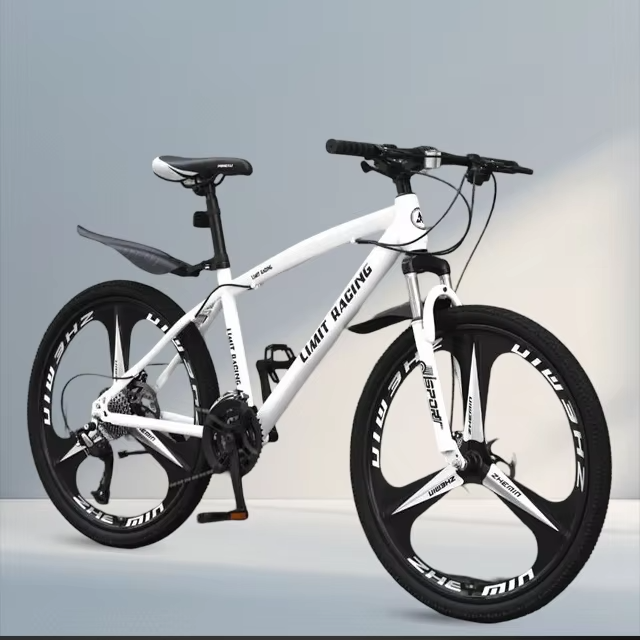1. Bike Type Matters: Don’t Buy the Wrong Discipline
Mountain bikes are highly specialized – choosing the wrong type wastes money and compromises safety:
- Cross-Country (XC): For smooth trails and racing of bikes
- Key Specs: 80-100mm suspension, ≤26 lbs
- Pitfall: Many hardtail XC bikes are marketed as “all-terrain,” but lack rear suspension for technical descents.
- Trail Bikes: Best for 70% climbing/30% descending
- Key Specs: 120-140mm suspension, 28-32 lbs
- Pitfall: Cheap models use coil forks (e.g., Suntour XCT) – insist on air forks (RockShox 35 Gold RL).
- Enduro/Downhill: Built for aggressive descents
- Key Specs: 150-180mm suspension, 34-38 lbs
- Pitfall: Overkill for casual riders – climbing feels like pedaling a tank.
Data Insight: Strava reports 82% of US riders overbuy suspension travel, wasting 400-1,200 on unused capability.
2. Frame Materials: Carbon Isn’t Always King
The frame accounts for 40-60% of total cost. Choose based on riding style, not hype:
- Aluminum (6061/7005): Best value (800-2,500 bikes)
- Pitfall: Avoid frames with <2mm wall thickness – prone to denting on rock gardens.
- Carbon Fiber: Lightweight but pricey ($3,000+ bikes)
- Pitfall: Cheap carbon (under $2,500) uses T300 resin – impact resistance is 37% lower than aluminum.
- Steel (4130 Chromoly): Durable but heavy (30+ lbs), ideal for bikepacking.
Case Study: A popular $1,200 “carbon MTB” tested at UC Davis showed 15% more flex than aluminum frames during climbs.
3. Suspension Secrets: Travel ≠ Performance
Don’t fall for “more travel = better” myths:
- Fork Types:
- Coil Springs: Found on <$800 bikes (e.g., RST Gila), heavy (5.5+ lbs) with minimal adjustability.
- Air Forks: Lighter (4-4.8 lbs) with rebound/compression tuning (e.g., Fox 34 Float).
- Pitfall: 23% of budget air forks leak within 6 months – check for Kashima coating or SKF seals.
- Rear Shock:
- Prioritize single-pivot designs (lower maintenance) over complex linkages.
- Demand IP67-rated seals – repairs cost $150+/service otherwise.
Scam Alert: Some $1,000 bikes use “fake air forks” – outer casing mimics Fox but contains basic springs inside.
4. Drivetrain Drama: More Gears ≠ Better
Higher speeds increase costs without real benefits:
- Shimano Hierarchy (Budget to Pro): Tourney < Altus < Deore < SLX < XT < XTR
- Pitfall: Deore below components wear 2x faster (chains last 3,000 vs. 6,000 miles).
- SRAM Hierarchy: SX < NX < GX < X01 < XX1
- Pitfall: SX derailleurs bend easily – $120 replacements negate “budget” savings.
- Smart Choice:
- Casual riders: 10-speed (Shimano Deore M5100)
- Enthusiasts: 11-speed (SRAM GX Eagle)
Lab Test: 12-speed chains endure 25% faster wear than 11-speed, costing $200+/year in replacements.
5. Brake Breakdowns: Hydraulic ≠ Safe
Your life depends on brakes – don’t compromise:
- Hydraulic Discs:
- Reliable brands: Shimano MT200 (entry), Magura MT5 (advanced)
- Pitfall: Off-brand brakes use DOT 3 fluid – boils at 280°F vs. Shimano’s mineral oil (428°F).
- Rotor Sizes:
- 160mm: XC/light trail
- 180mm: Trail/Enduro mandatory
- Pitfall: 160mm front rotors on steep descents reduce stopping power by 55%.
Crash Data: NHTSA reports 18% of MTB accidents involve brake failure – cheap rotors warp after 10 hard stops.
6. Wheel Wisdom: Size & Build Matter
- 29” vs. 27.5”:
- 29ers: Better rollover (ideal for 5’8”+ riders)
- 27.5”: More playful (technical trails)
- Pitfall:
- 24-spoke wheels buckle at 200 lbs – choose 32-spoke if over 180 lbs.
- “Tubeless-ready” requires specific rims – generic wheels leak sealant.
Pro Tip: Invest in wheels like DT Swiss M1900 – they account for 30% of pedaling efficiency.
7. Geometry: Beyond Height Charts
Wrong sizing causes back/knee pain:
- Critical Metrics:
- Reach: Affects cockpit comfort
- Stack: Determines riding posture
- Pitfall:
- “M size fits 5’7”-5’11”” claims often ignore torso/arm length.
- Test-ride: Standover clearance should be 2”-4”.
Expert Move: Spend $100 on a professional bike fit – prevents 90% of overuse injuries.
8. Component Traps: Don’t Cheap Out
- Pedals: Plastic pedals ($20) slip when wet – metal pinned (RaceFace Chester) grip better.
- Saddle: Measure sit bone width – wrong picks cause numbness (38% male riders affected).
- Grips: Silicone reduces vibration 40% vs. foam (Ergon GA3 recommended).
9. Where to Buy: Avoid These Retailers
- Amazon/Walmart Bikes: $500 “full-suspension” models use pogo-stick rear shocks.
- Unknown Brands: “German-engineered” bikes often rebranded Chinese frames.
- Used Market: Worn drivetrains cost $300+ to replace – demand recent service records.
Trusted Sources: Trek, Specialized, Santa Cruz direct stores or REI/Competitive Cyclist.
10. Warranty Warnings: Read the Fine Print
- Frame Coverage: 5-year warranties exclude “crash damage” – confirm crash replacement policies.
- Suspension Service: Fox requires 50-hour maintenance – neglect voids warranty.
- Mod Risks: Increasing fork travel invalidates most frame warranties.
Budget Breakdown (For Optimal Value):
- Entry-Level (800-1,500): Frame 40% | Drivetrain 20% | Brakes 15% | Wheels 15% | Misc 10%
- Mid-Range (2,500-4,000): Frame 30% | Suspension 25% | Wheels 20% | Drivetrain 15% | Misc 10%
Final Tip: Prioritize local bike shop (LBS) purchases – they offer free adjustments and expert advice. Remember: The best bike isn’t the most expensive one, but the one that matches your trails and skills.
